From Cartoons to Reality: The Uncanny Simpsons Predictions That Left Everyone Speechless
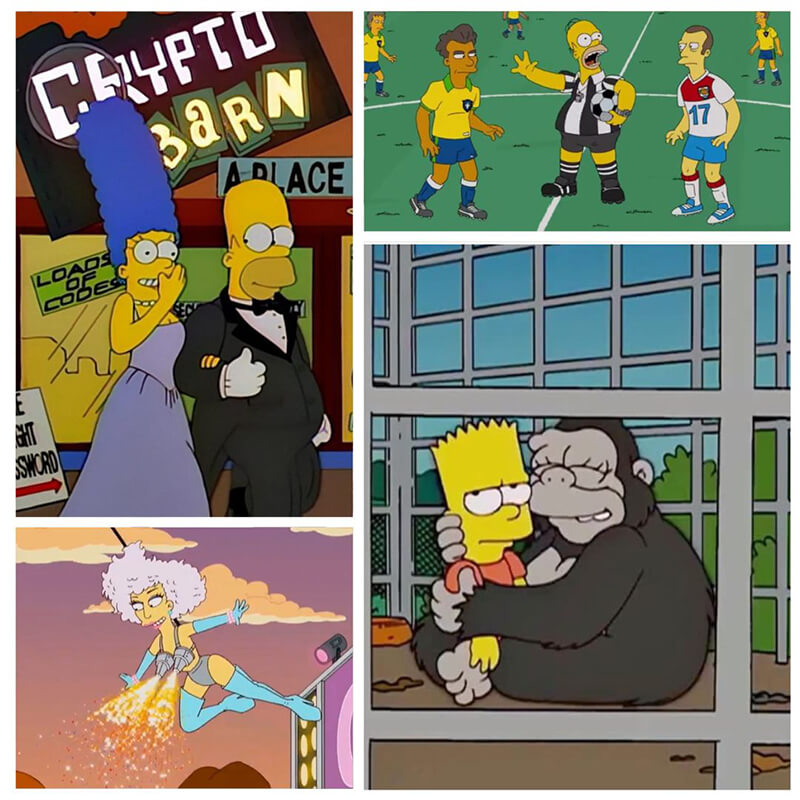
“The Simpsons” has remained a monumental presence in television for over three decades. This iconic series, crafted by the visionary Matt Groening, boasts 35 seasons and over 750 episodes, continuing to be the most recognizable TV family. Matt’s genius lies not only in keeping the show relevant with sharp cultural references but also in crafting storylines that, quite uncannily, mirror real-world events years after airing.
Some might dismiss these as mere coincidences, but as we delve deeper, it’s hard to ignore the sheer number of predictions that have turned into reality. From political forecasts to technological advancements, “The Simpsons” seems to have a knack for foreseeing the future. So, buckle up and join us as we explore these mind-boggling prophesies!
The Simpsons’ Super Bowl Sweep
Predicted: 1992
Came true:1992
In a remarkable streak of prescience, the show accurately forecasted the winners of the Super Bowl for three consecutive years. This mind-boggling feat unfolded in the episodes “Lisa the Greek,” originally aired in 1992, and “Homer and Ned’s Hail Mary Pass,” aired in 2005. Here’s how the magic happened:

In “Lisa the Greek,” aired just days before the 1992 Super Bowl, Lisa Simpson, in her role as a football prognosticator, predicted the Washington Redskins would triumph. Lo and behold, they did! The show then re-aired the episode with altered dialogue right before the 1993 and 1994 Super Bowls, magically swapping in the Dallas Cowboys as Lisa’s pick. And guess what? The Cowboys clinched victory both times!
The Nobel Nod
Predicted: 2010
Came true: 2016
In Season 22 of “The Simpsons,” an episode titled “Elementary School Musical” showcases Martin Prince’s participation in a Nobel Prize betting pool. Among the names on his scorecard is one particularly notable—Bengt Holmström, an MIT professor.

This episode, which aired in 2010, featured Holmström’s name in a way that many viewers probably glanced over without a second thought. Fast forward six years to 2016, and the prediction materializes into reality. Bengt Holmström indeed wins the Nobel Prize, but not for Peace, as the show hinted, but for Economics. He was honored for his work on contract theory, sharing the prize with Oliver Hart.
Swept Away
Predicted: 2010
Came true: 2018
With its strategic shuffling of stones across the ice, curling may not be the first sport you’d associate with prophetic television. In a 2010 episode titled “Boy Meets Curl,” the show throws Marge and Homer into an unexpected curling challenge. They join the US mixed doubles team and compete against the dominant Swedish squad.
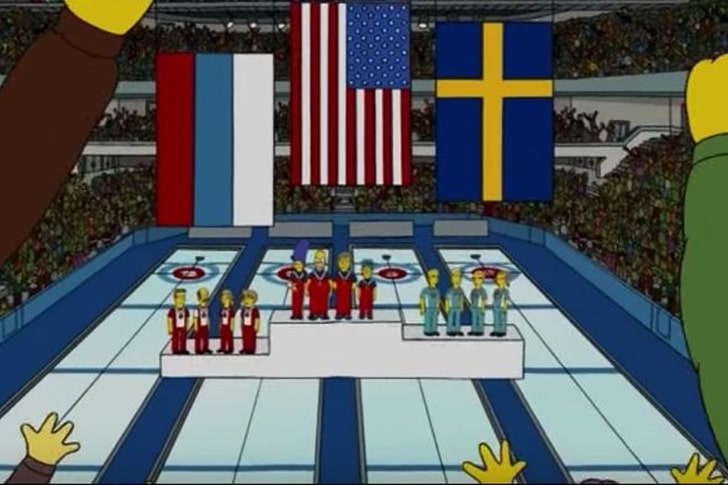
However, in a stunning upset, the Simpson pair led the US team to victory. Reality seemed to take a cue from fiction at the 2018 Winter Olympics in PyeongChang. Mirroring the animated triumph of Marge and Homer, the real-life USA men’s curling team, historically underdogs in the sport, faced off against Sweden, the curling powerhouse.
The Mouse Buys the Fox
Predicted: 1998
Came true: 2017
In an almost clairvoyant twist, “The Simpsons,” in a 1998 episode, threw out what seemed like a playful, far-fetched joke: a sign outside the 20th Century Fox studio declaring it a “division of Walt Disney Co.” Fast forward two decades to 2017, and this gag turned into a staggering reality.

Disney, the entertainment giant often depicted as a friendly mouse in the media world, officially acquired most of 20th Century Fox in a mammoth $52 billion deal. The irony? “The Simpsons,” known for its sharp, satirical humor and often irreverent take on pop culture, became part of the very entity it once joked about.
Homer’s Higgs Boson
Predicted: 1998
Came true: 2012
When “The Simpsons” aired an episode in 1998 where Homer Simpson dabbles in inventing, viewers got more than just a dose of the show’s trademark humor. They witnessed a moment that would later be seen as a startling scientific prophecy. In the episode titled “The Wizard of Evergreen Terrace,” Homer is seen standing in front of a blackboard, chalk in hand, with an equation scribbled behind him.
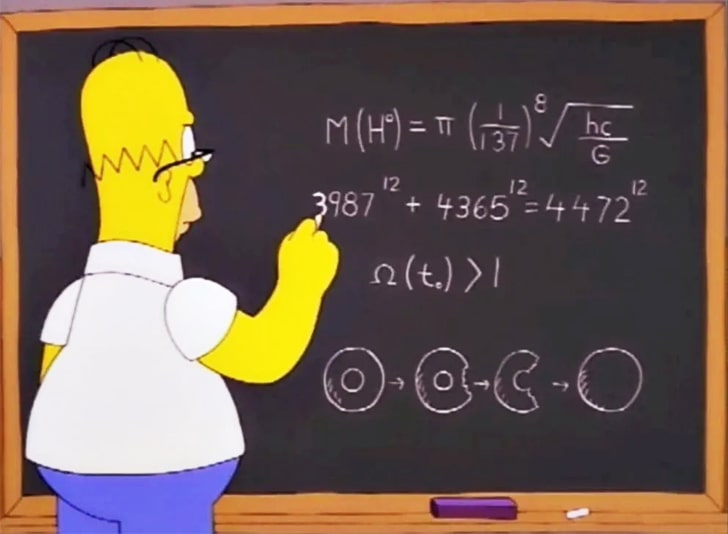
Fourteen years after the episode aired, in 2012, the physics world buzzed with the groundbreaking discovery of the Higgs Boson, often called the “God Particle.” What’s jaw-dropping is that the equation on Homer’s blackboard closely predicts the mass of the Higgs Boson.
London’s Skyline Reimagined
Predicted: 1995
Came true: 2009
In an episode that takes viewers on a journey to the future, the show presents a panoramic view of London, replete with its famous landmarks and a notable addition: a towering skyscraper closely resembling the London Shard. This wouldn’t be remarkable, except for the fact that this episode aired a whole 14 years before the Shard was constructed.
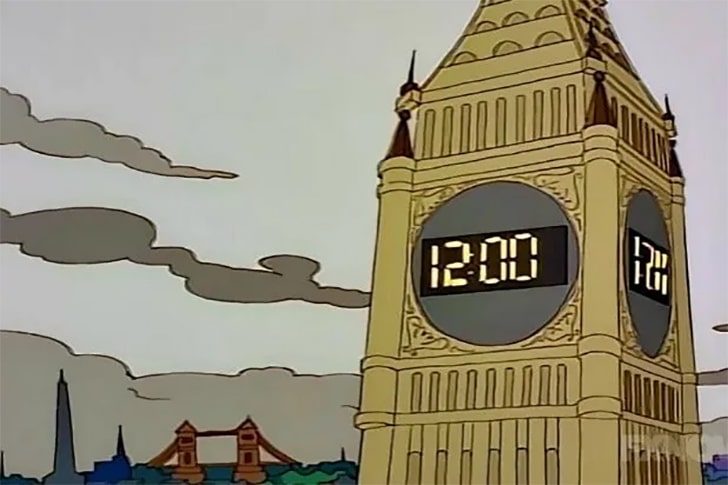
The Shard, now a defining feature of London’s skyline, was only completed in 2012. Yet, in this futuristic episode of “The Simpsons,” it stands tall among other iconic buildings. The inclusion of the Shard in the show’s portrayal of future London is more than just a lucky guess.
From Springfield to Smartphones
Predicted: 1994
Came true: 2007
In a humorous and prophetic scene, “The Simpsons” once again showcased their knack for predicting technological quirks long before they became everyday frustrations. In an episode titled “Lisa on Ice,” aired in 1994, there’s a memorable moment involving Kearney, one of Springfield’s local bullies. He uses a “Newton” device—a clear precursor to modern smartphones like the iPhone—to jot down a mischievous plan.
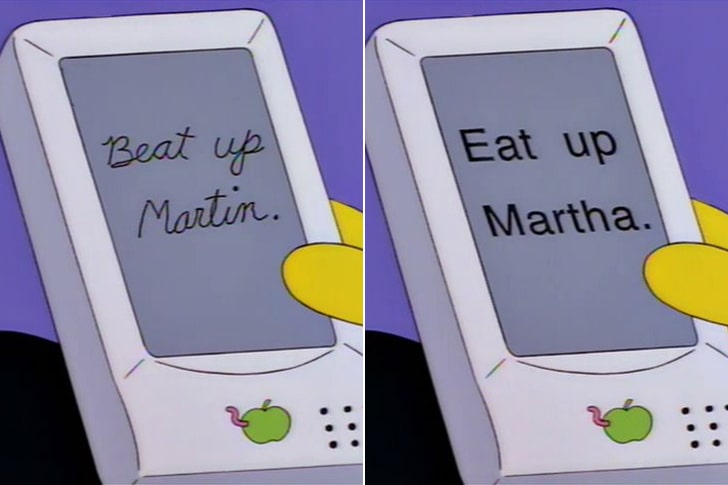
This scene was a tongue-in-cheek prediction of the autocorrect woes befalling Apple. The Newton, Apple’s early attempt at a personal digital assistant, struggled with handwriting recognition. This problem would evolve into the autocorrect issues familiar to iPhone users.
FaceTime Foretold
Predicted: 1995
Came true: 2010
When “The Simpsons” aired the episode “Lisa’s Wedding” in 1995, it presented a view of the future that seemed almost unbelievable at the time. One of the most striking scenes was Lisa Simpson engaging in a face-to-face online chat with Marge to announce her engagement. Back then, the idea of real-time video communication through a handheld device was the stuff of science fiction.
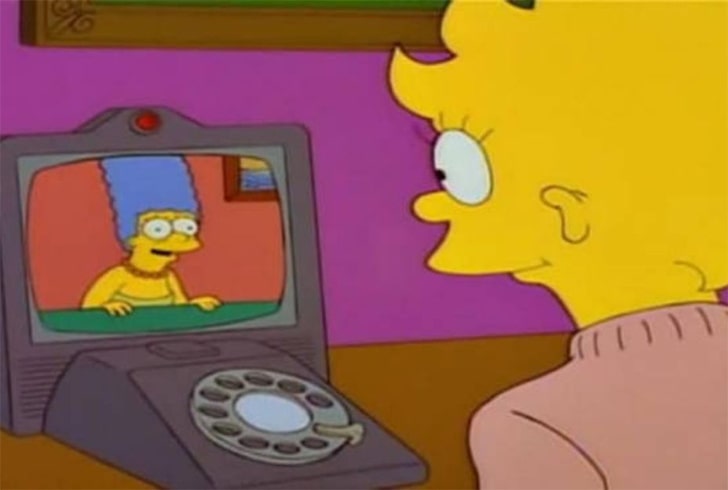
Fast forward 15 years, and Apple unveiled FaceTime in 2010, making the once far-fetched concept a reality. FaceTime allows users to have video conversations with anyone worldwide using their Apple devices. While Apple’s FaceTime wasn’t the first video-calling technology, it popularized the concept.
Goal! Simpsons Score!
Predicted: 2014
Came true: 2014
In yet another instance, “The Simpsons” had a forecast of the 2014 World Cup outcome. The episode “You Don’t Have to Live Like a Referee,” aired a few months before the 2014 World Cup, showcases the Simpsons attending the tournament, with Homer as a referee. The plot thickens as Germany triumphs over Brazil and dominates the game. Meanwhile, Homer gets embroiled in corruption that often plagues high-stakes sports.
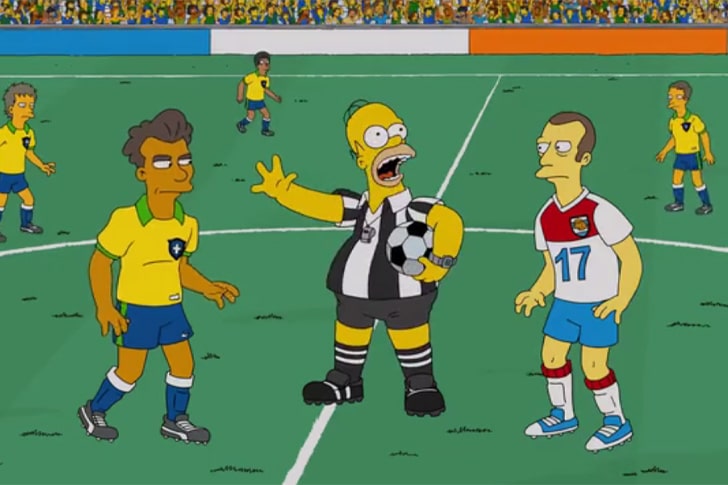
The actual 2014 World Cup in Brazil unfolded with startling similarities as if scripted. In a historic and somewhat unexpected victory, Germany defeated Brazil and won the tournament. Furthermore, two FIFA presidents were accused of engaging in corrupt negotiations, echoing Homer’s fictional misadventures.
Wristwatch Whispers
Predicted: 1995
Came true: 2014
In a 1995 episode of “The Simpsons” titled “Lisa’s Wedding,” the show once again ventured into the realm of future technology with uncanny accuracy. Visiting a fortune-teller at a Renaissance fair, Lisa is transported 15 years forward to 2010. In her imagined future at 23, she encounters her prospective husband, who organizes a marriage proposal using his wristwatch.
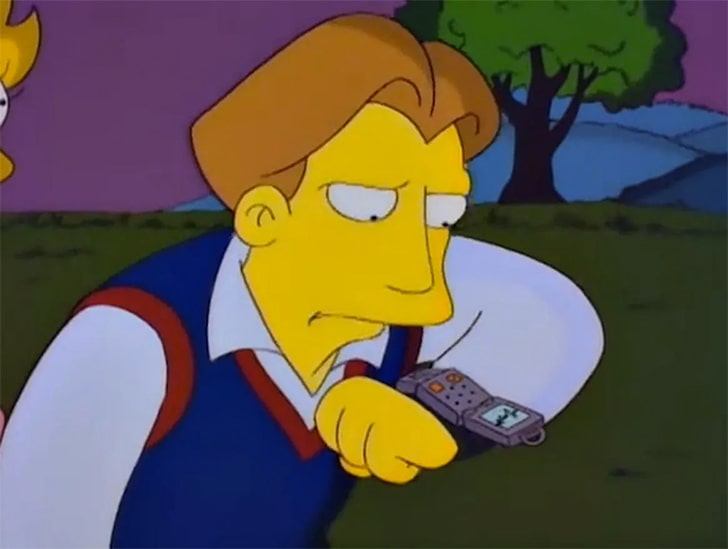
The idea of speaking into a watch was pure science fiction at the time, a whimsical nod to spy movies and futuristic fantasies. Yet, nearly two decades later, in 2014, Apple unveiled the concept of the smartwatch, transforming what was once a flight of fancy into a tangible reality.
Foresight into Farmville Fun
Predicted: 1998
Came true: 2009
In a 1998 episode of “The Simpsons,” Marge Simpson, ever the pragmatic mother, comes up with a novel idea for teaching her children about yard work: a virtual reality (VR) farming experience. In the episode, the kids don VR headsets and use tools to tend to a digital farm, a concept that was both innovative and amusingly ahead of its time.
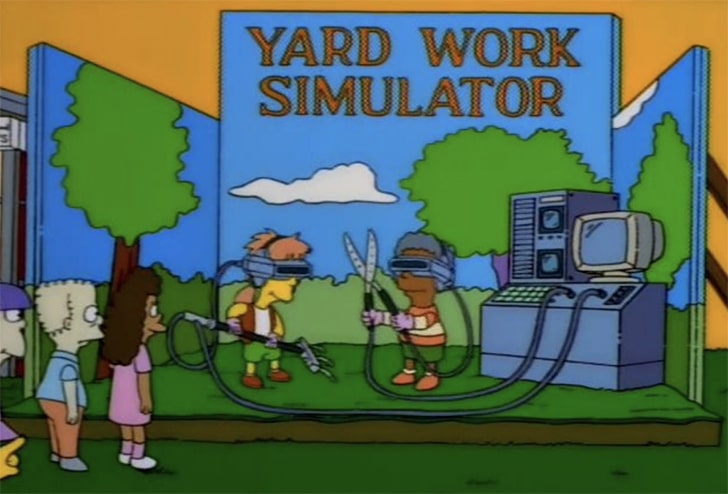
Moreover, this episode eerily prefigured the rise of “Farmville,” a popular online game released in 2009. “Farmville” allowed players to cultivate virtual farms, mirroring the VR farming experience depicted in “The Simpsons.” The game became a phenomenon, capturing the imaginations of millions of users, much like the VR farming experience that captivated the Simpson children.
Mattingly’s Mane Mystery
Predicted: 1992
Came true: 1992
In a peculiar case where reality seemed to take cues from animation, “Homer at the Bat” featured a storyline that unexpectedly mirrored real-life events. In the episode, Mr. Burns, the curmudgeonly owner of the Springfield Nuclear Power Plant, recruits professional baseball players, including New York Yankee Don Mattingly. However, in a twist of comedic irony, Burns dismisses Don from the team due to his supposed “long hair,” humorously non-existent in the show.
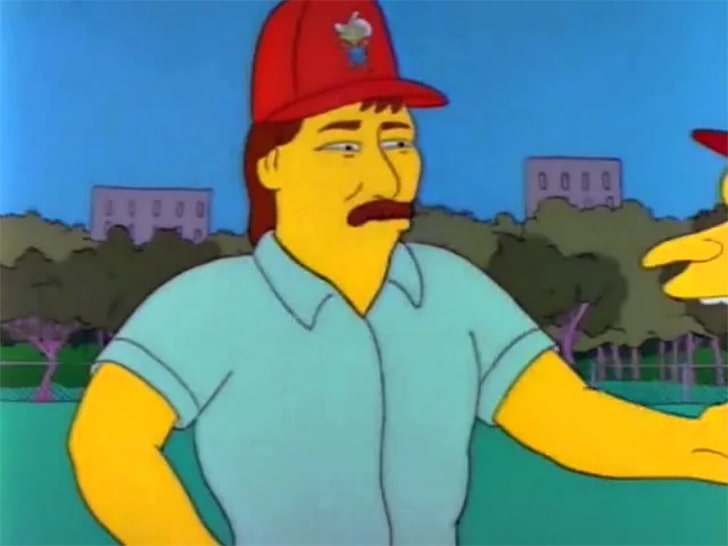
A month after recording the episode, the real Don Mattingly found himself in a hair-related controversy with the actual New York Yankees. The management fined Mattingly $250 for refusing to cut his hair, claiming it violated the team’s grooming policies.
Rock and Roll Forever
Predicted: 1995
Came true: 2012
In the 1995 episode “Lisa’s Wedding,” “The Simpsons” added yet another layer to their tapestry of predictions—this time in the world of music. The episode, set in the future, features a poster in Lisa’s room advertising the Rolling Stones’ “Steel Wheelchair Tour 2010.” This tongue-in-cheek reference not only played on the legendary band’s enduring popularity but also humorously hinted at their age.

The Rolling Stones, true to their indomitable spirit and undeniable talent, were indeed still touring and selling out tickets nearly two decades after the episode aired. While the actual tour wasn’t named “Steel Wheelchair,” the essence of the prediction held.
Cryptic Currency
Predicted: 1997
Came true: 1999
In their typically prescient fashion, “The Simpsons” hinted at the concept of cryptocurrency long before it became a buzzword in the financial world. In a 1997 episode, Homer and Marge stumble upon a store intriguingly named “Crypto Barn,” a subtle yet significant nod to the idea of digital or cryptographic currencies.
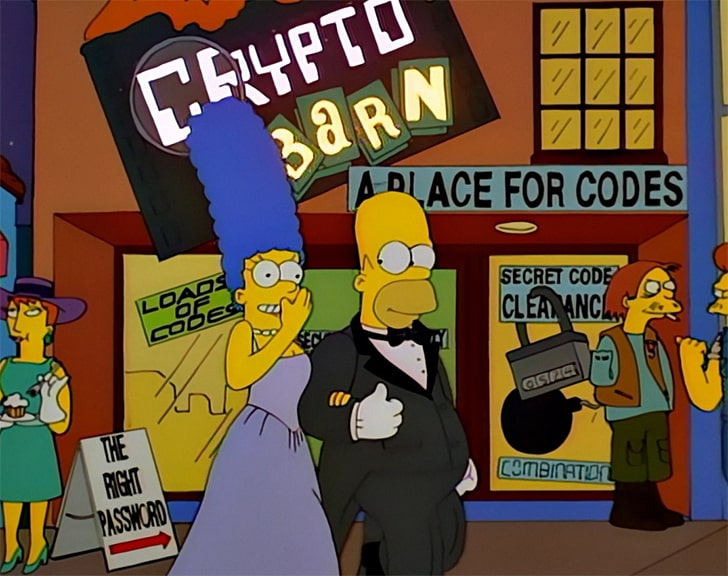
This reference is particularly remarkable, considering it predates Milton Friedman’s two-year early prediction of using digital currencies. Milton, a Nobel Prize laureate in Economic Sciences, foresaw the emergence of internet-based currencies in 1999. This concept would later materialize as cryptocurrencies like Bitcoin. Years before they became mainstream, this early reference to cryptographic concepts adds to the mystique of “The Simpsons” as a series.
Horseplay in the Cafeteria
Predicted: 1994
Came true: 2013
The episode “Sweet Seymour Skinner’s Baadasssss Song” featuring Lunchlady Doris reveals the dubious secret behind Springfield Elementary’s unappetizing meals: horse meat. This storyline, meant as a darkly comic jab at school lunch quality, unexpectedly mirrored a real food scandal two decades later.
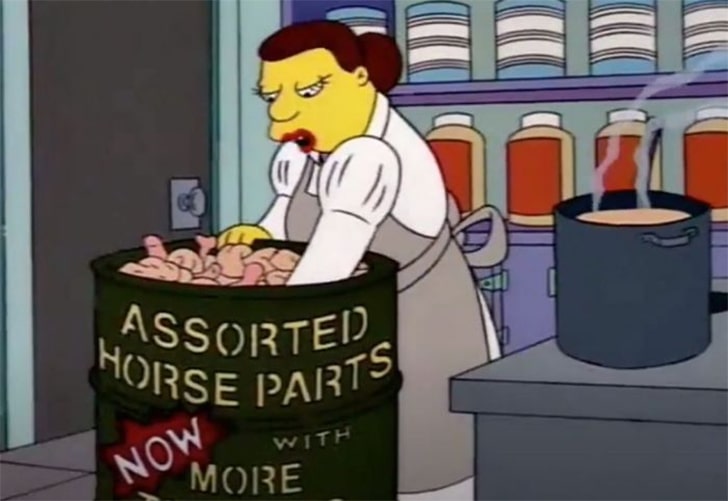
In 2013, a shocking discovery unfolded across Europe. What was being sold as 100% beef in supermarkets and even finding its way into school lunches in the UK and Ireland was found to be contaminated with horse meat. This scandal rocked the food industry, raising concerns about food labeling, safety, and ethics. The similarities between this real-life incident and the decades-old Simpsons episode were uncanny.
Homer’s Celestial Counterpart
Predicted: 1994
Came true: 2013
The show tackled the space exploration theme in a classic “The Simpsons” episode with its trademark blend of humor and satire. In the episode, NASA, worried about waning public interest in their missions, decides to send an “average Joe” into space. Enter Homer Simpson, the epitome of the everyday man, who embarks on a civilian space adventure.
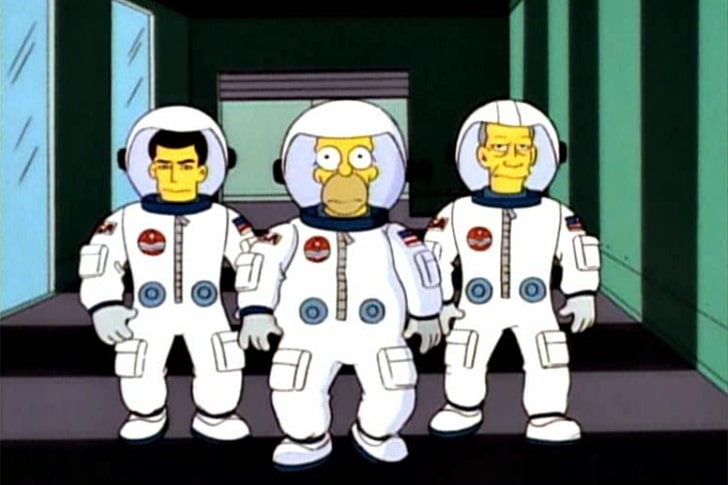
Fast forward 20 years and life strikingly imitates art. Oliver Knight, a name that may not resonate with the fame of seasoned astronauts, became that ‘average Joe’ who turned a fictional narrative into reality. Oliver’s journey into space marked a significant moment in space exploration history, where the final frontier became accessible to trained astronauts and civilians.
Beatles’ Belated Reply
Predicted: 1991
Came true: 2014
“The Simpsons,” with its sharp wit, once took a playful jab at a longstanding pop culture anecdote – the Beatles’ overwhelming pile of fan mail. In a 1991 episode, Ringo Starr, the famed Beatles drummer, is humorously depicted surrounded by mountains of unanswered fan letters. This scene was a lighthearted nod to the impossibility of responding to their legions of fans.

In 2014, news broke that Paul McCartney, another legendary Beatles member, responded to a fan message. It was a response to a tape recorded by two young girls sent to the band fifty years earlier. While a few decades in the making, Paul’s belated reply was a delightful surprise!
Hazardous Harvest
Predicted: 1999
Came true: 2011
In a typically outlandish “The Simpsons” episode, Homer Simpson decides to try his hand at agriculture, but with a classic twist: he uses plutonium to supercharge his tomato crop. The result? An absurdly addictive and bizarrely mutated vegetable, a storyline that’s pure Springfield fantasy.
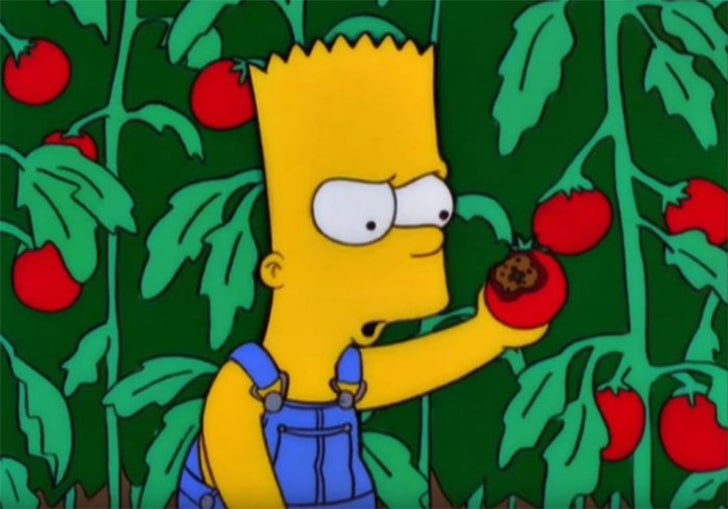
Years after this episode aired, the world witnessed the tragic Fukushima nuclear disaster in Japan in 2011. The catastrophe led to radiation leakage, which significantly impacted the surrounding environment, including local agriculture. Among the affected produce were tomatoes, some of which were reported to have undergone unusual deformations, a chilling echo of Homer’s radioactive crop experiment.
Hat-Cam to Headband
Predicted: 1994
Came true: 2004
In the 1994 episode “Homer and Apu,” “The Simpsons” once again displayed their knack for anticipating future technology humorously exaggeratedly. To capture incriminating footage, Homer Simpson uses a conspicuously large hat with a hidden camera. This comical take on covert filming was a far cry from the sleek, discreet devices we’re familiar with today.
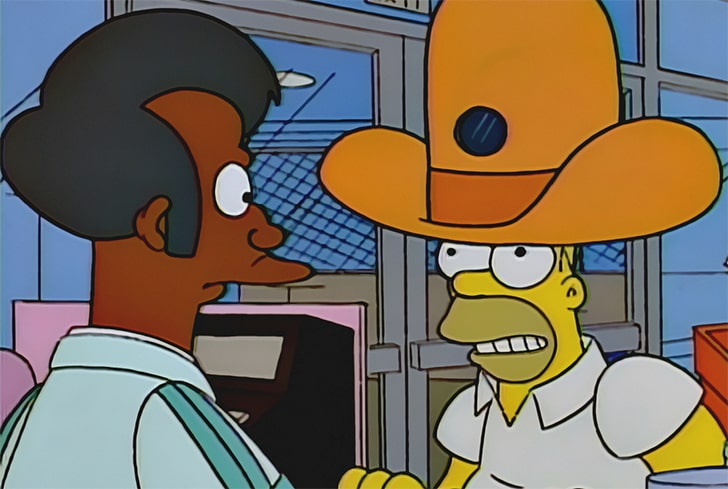
Fast forward a decade, and the introduction of the GoPro revolutionized personal and action videography. This compact, durable camera lets users record their experiences hands-free, from high-adrenaline sports to everyday adventures. The GoPro’s design and functionality are far from Homer’s bulky hat-cam, yet the basic principle remains the same.
Babbling Breakthrough
Predicted: 1992
Came true: 2015
The 1992 “The Simpsons” episode titled “Brother, Can You Spare Two Dimes?” humorously explored many parents’ wish to understand what their babies are trying to say. In the show, Homer’s brother, Herb, invents a device that translates baby Maggie’s incomprehensible babbling into clear speech, an idea that seemed as endearing as fanciful.

Remarkably, 23 years after this episode aired, Taiwanese researchers developed an app, “Cry Translator,” designed to interpret over 200,000 sounds from hundreds of babies. Rather than translating these sounds into words, the technology focused on identifying the mood and needs of the infants based on the nuances of their crying.
Life Gives You Lemons
Predicted: 1995
Came true: 2011
In the “The Simpsons” episode “Lemons of Troy,” aired in 1995, Springfield’s children find themselves in a quirky and unexpected conflict—kids steal their cherished lemon tree from a neighboring town. While fitting the show’s unique blend of humor and absurdity, this plot seemed like nothing more than a fictional, light-hearted caper.
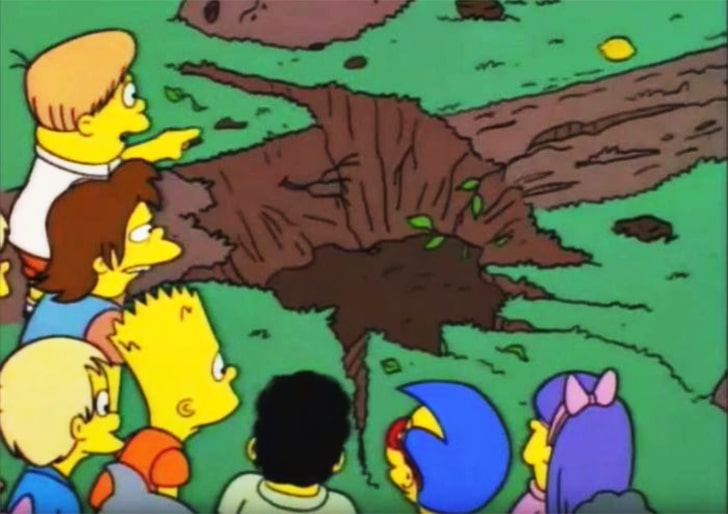
Strangely, a couple in Wisconsin experienced a strangely similar incident in 2011. They woke up to find their own lemon tree, presumably a source of pride and joy, mysteriously vanished. This real-life lemon tree theft echoed the animated heist from “The Simpsons” in an uncanny manner, transforming a comedic storyline into a bizarre real-world occurrence.
Vegas Visions
Predicted: 1999
Came true: 2018
In a 1999 episode of “The Simpsons” titled “Viva Ned Flanders,” Homer and Ned’s wild escapade in Las Vegas delivers more than just comedic antics; it presents a curious foresight into the world of sports and cinema. During a chaotic morning in their trashed hotel room at “Nero’s Palace,” a brief but notable glimpse of the Stanley Cup can be seen amidst the disarray.
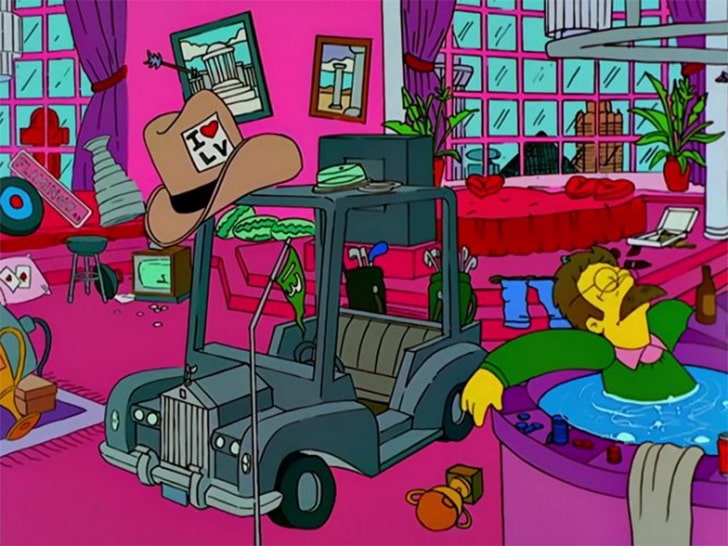
In 2018, 19 years after the episode aired, Las Vegas welcomed its own NHL team, the Golden Knights. Their debut brought professional hockey to the city, making the Stanley Cup’s appearance in the episode an accurate prediction of the future of the sports.
Homer vs. Miley
Predicted: 2007
Came true: 2013
In a classic scene, Homer’s comedic yet ill-fated attempt to be a hero with a wrecking ball became an iconic moment in the show’s history. His endeavor to save his family using a demolition vehicle goes hilariously wrong, as the wrecking ball swings back, causing havoc and eventually pinning him down.
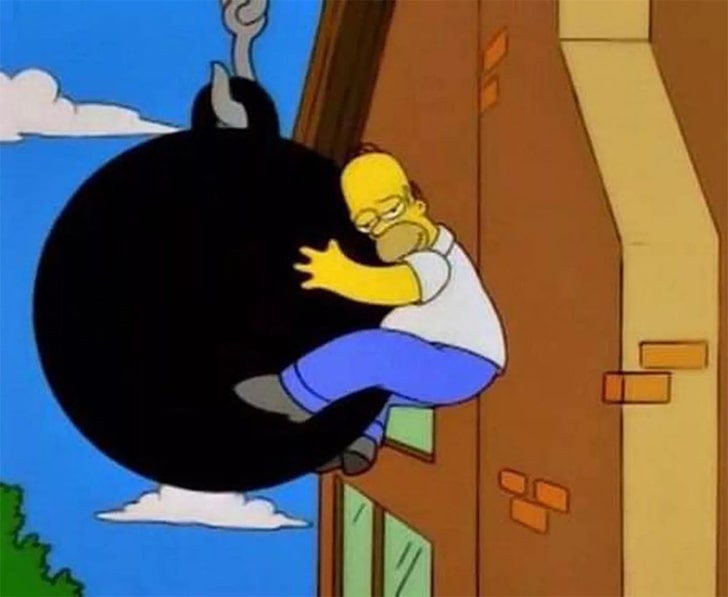
The Wrecking Ball made a dramatic re-entry into popular culture, this time with pop star Miley Cyrus in her music video for the hit song “Wrecking Ball.” Cyrus’ portrayal, swinging on the wrecking ball in a strikingly vulnerable yet powerful performance, became a defining moment in her career, symbolizing a departure from her earlier image.
Hip-Hop and Einstein Echo
Predicted: 1999
Came true: 2018
The show once again melded humor with a nod to scientific greatness in “They Saved Lisa’s Brain.” Renowned physicist Stephen Hawking made a memorable guest appearance, where he was humorously portrayed as a rapper named “A Brief History of Rhyme.” Decked out in hip-hop attire, He sported a turntable attached to his wheelchair and an E=MC² chain around his neck—a famous equation formulated by another physics titan, Albert Einstein.
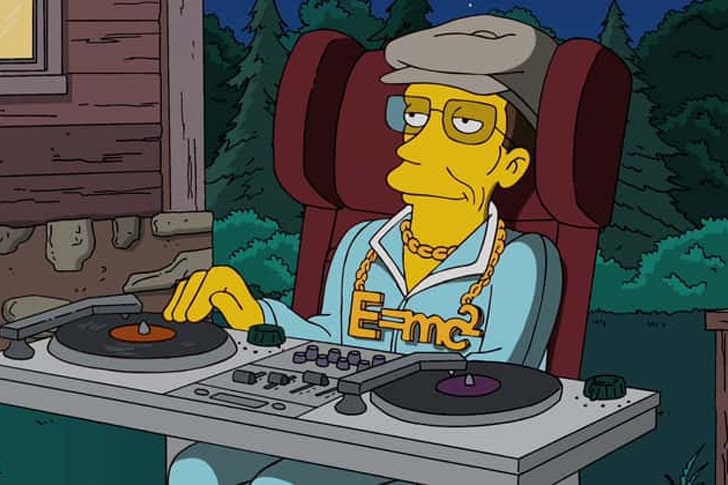
This whimsical portrayal gained an added significance following Stephen’s passing on March 14, 2018. Fans couldn’t help but note the eerie coincidence: Stephen died on Einstein’s birthday, proving that legacies in the realm of physics are deeply intertwined!
Simpsons’ Star-Studded Prediction
Predicted: 2009
Came true: 2015
In an intriguing display of their prophetic abilities, “The Simpsons” once again blurred the line between fiction and reality. In the episode where Homer lands the lead role in the movie adaptation of Everyman, he visits the fictional “Ginormous Pictures” studio. At the entrance, viewers can spot two movie posters: “Star Wars” and “Alvin and the Chipmunks 3,” subtly implying a simultaneous release date.
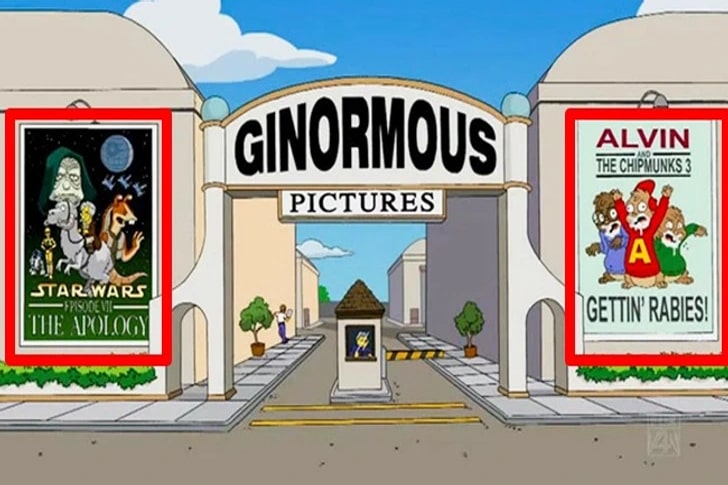
Fast forward to 2015, and this animated speculation turned into an actual cinematic event. In a remarkable coincidence, both “Star Wars: The Force Awakens” and “Alvin and the Chipmunks: The Road Chip” were released on the same day!
Treadmill Tunes
Predicted: 2007
Came true: 2009
A 2007 episode shows Marge’s experience at a gym. Comparing herself to a cardboard cutout of Wonder Woman, Marge feels the pressure to get in shape and joins a gym. However, her attempt to use a treadmill turns into a struggle. Adding to her dismay, she observes other gym members using treadmills easily, some even performing dance routines while exercising.
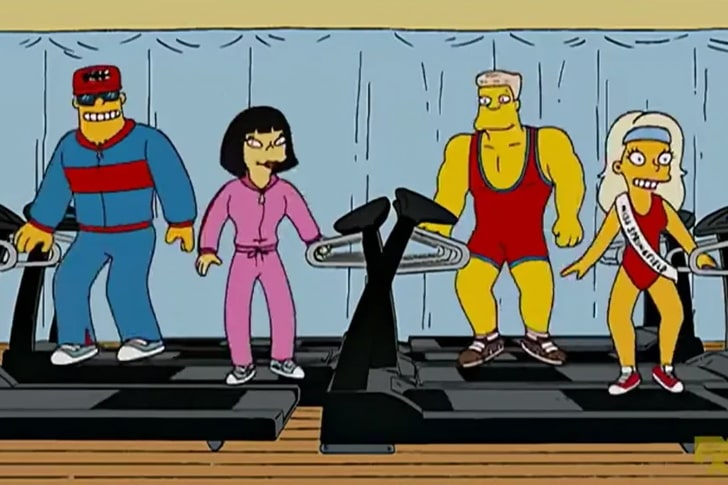
In 2009, two years after the episode aired, the band OK Go released their now-famous music video for “Here It Goes Again.” The video features the band members performing an intricately choreographed routine on treadmills. The video went viral for its creativity and the impressive coordination required to dance on moving treadmills.
Echoes in Time
Predicted: 1994
Came true: 2017
The episode “Sideshow Bob Roberts” has a scene that, in retrospect, resembles a significant moment in the much later series “13 Reasons Why.” Bart is depicted sitting in class, engrossed in his cassette player. Then came the release of “13 Reasons Why,” a series that revolves around a set of cassette tapes left by a high school student, Hannah Baker.
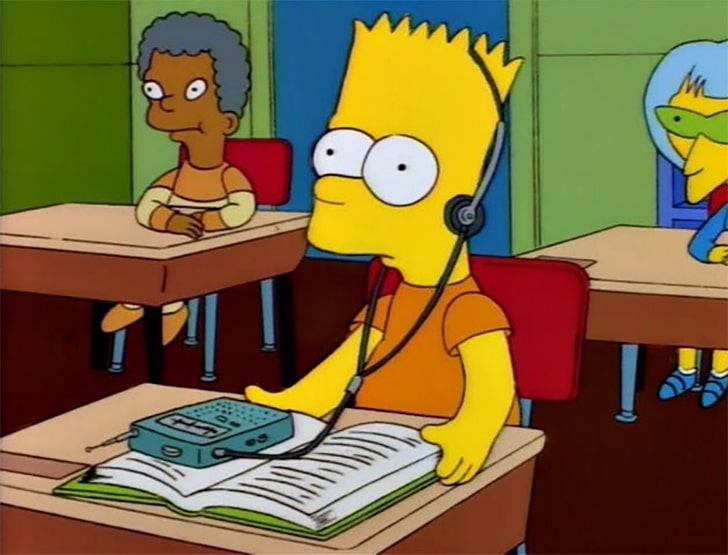
One of the pivotal characters, Clay Jensen, is often shown listening to these tapes, trying to unravel the story they tell. In several scenes, Clay is seen listening to the tapes in various settings, including in class, much like Bart in the earlier episode.
Gaga’s Aerial Encore
Predicted: 2012
Came true: 2017
In a “The Simpsons” episode titled “Lisa Goes Gaga,” aired in 2012, the show featured pop icon Lady Gaga visiting Springfield to lift the town’s spirits, particularly focusing on cheering up Lisa Simpson. In a spectacular display, Lady Gaga performs a concert where she dons a dazzling platinum outfit and soars over the crowd, suspended by wires.
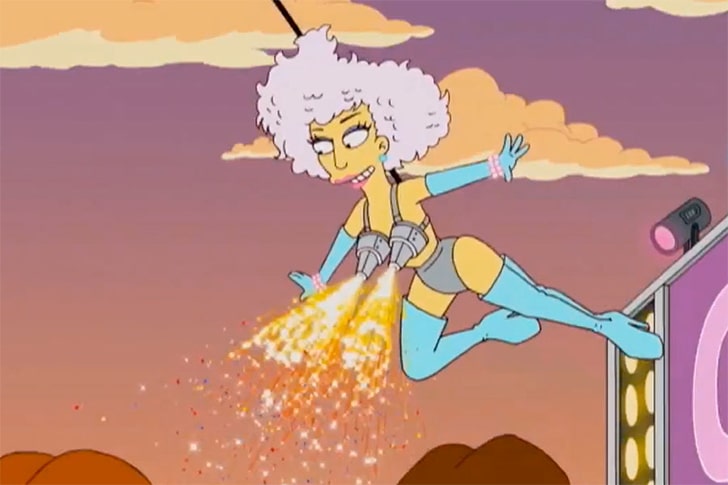
Remarkably, almost five years after this episode, Lady Gaga was chosen to headline the Super Bowl LI halftime show in 2017. In an uncanny reflection of her animated Springfield performance, Gaga made a dramatic entrance, descending into the stadium while suspended by wires, adorned in a similarly eye-catching, shiny outfit.
Futuristic Bites
Predicted: 1995
Came true: 2010
In their signature style of blending humor with foresight, “The Simpsons” once again showcased their ability to predict future trends. In an episode set in the future, the show features Lisa’s husband-to-be buying a soy snack from a vending machine using a credit card. At the time of airing, this scene seemed like a nod to a distant, tech-driven future.
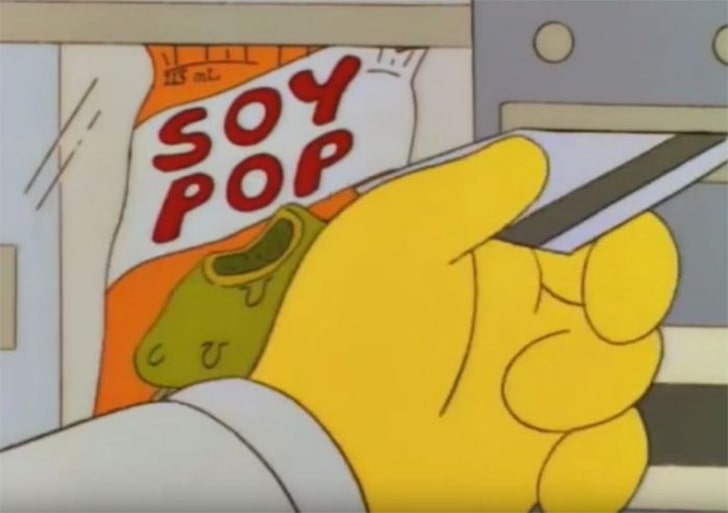
There has been a significant shift towards cashless transactions in recent years, with credit cards and digital payments becoming increasingly prevalent. Once a novel concept, vending machines accepting credit cards are now common. Additionally, the mention of soy snacks indicates the growing trend of health-conscious and plant-based eating.
Grease is the Word
Predicted: 1998
Came true: 2008
Homer embarked on an unusual money-making venture in “Lard of the Dance”: collecting and reselling grease. Initially, this plot seemed like just another of the show’s outlandish gags, playing up Homer’s often misguided schemes for quick cash. The idea of profiting from used cooking grease appeared more comical than feasible to viewers at the time.

However, in a surprising turn of events that echoed Homer’s grease caper, a real-life scenario unfolded in New York about a decade later. In an incident that seemed to draw directly from the “Simpsons” script, men were caught collecting used cooking oil from outside restaurants. Their intention? To sell it as biofuel.
Library of the Future
Predicted: 1995
Came true: 2011
The show once again showcased its futuristic vision in “Lisa’s Wedding” by depicting a world where robots run libraries. Set in a time when the Simpson family is transported into the future, Lisa, while attending college, visits a library where robots have taken over the traditional role of librarians.
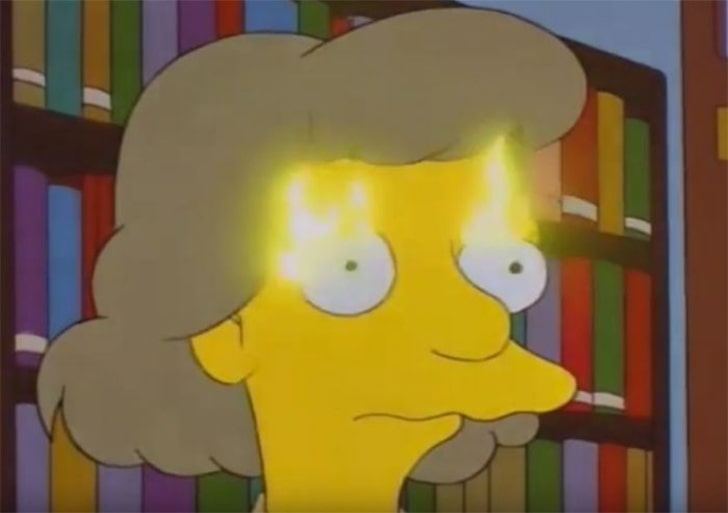
Interestingly, just a few years after this episode aired, the University of Chicago introduced a cutting-edge system in their library where robots were used to stack books. This innovative approach to book storage and retrieval was a significant step towards the automation of library services, reflecting the scenario envisioned in “The Simpsons.”
The Precursor to Apple’s Icon
Predicted: 1996
Came true: 2001
An episode features Springfield residents gathered around an object resembling what would later be known as the first-generation iPod. This device, depicted in the show as an intercom for a secret club, bore a striking resemblance to Apple’s groundbreaking music player, which was officially unveiled in 2001.
![]()
When the iPod was released, fans of “The Simpsons” were quick to notice the uncanny similarity between the show’s fictional gadget and Apple’s real-world invention. The design and aesthetic of the intercom in the show mirrored the iPod’s iconic look—which was a testament to the show’s ability to echo future design trends inadvertently.
Google’s Global Grip
Predicted: 2011
Came true: 2015
In an episode of “The Simpsons” that delves into the future, Lisa Simpson makes a striking remark about Google, stating that it has achieved world domination and remains “a damn fine search engine.” This comment, while part of the show’s usual blend of humor and satire, resonated deeply as it reflected the burgeoning influence of Google in our everyday lives.
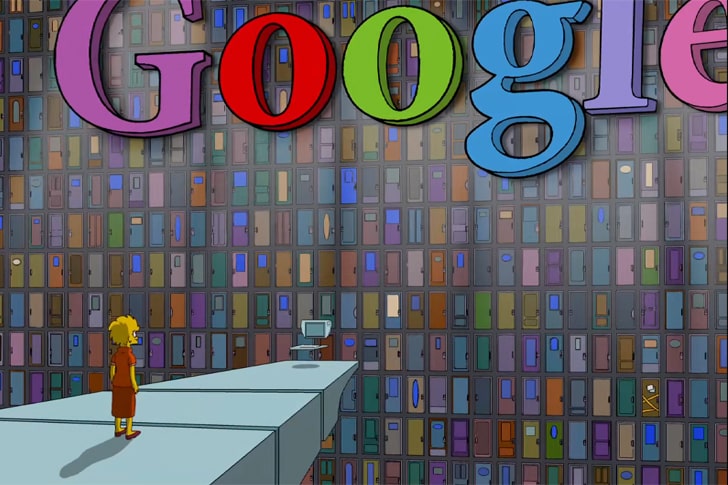
While Google has not literally taken over the world, its impact is indeed pervasive and profound. Google has grown far beyond a mere search engine, with its services and products infiltrating various aspects of personal and professional realms—all kickstarted when it became the primary associate of Alphabet Inc. in 2015.
Ralston’s Real Ordeal
Predicted: 1993
Came true: 2003
In a 1993 episode of “The Simpsons,” Homer Simpson finds himself in a classic comedic bind:
His arm gets stuck in a vending machine while attempting to retrieve a soda can. This situation, which played for laughs, turns dire when Homer is advised that he might have to cut off his arm to free himself.
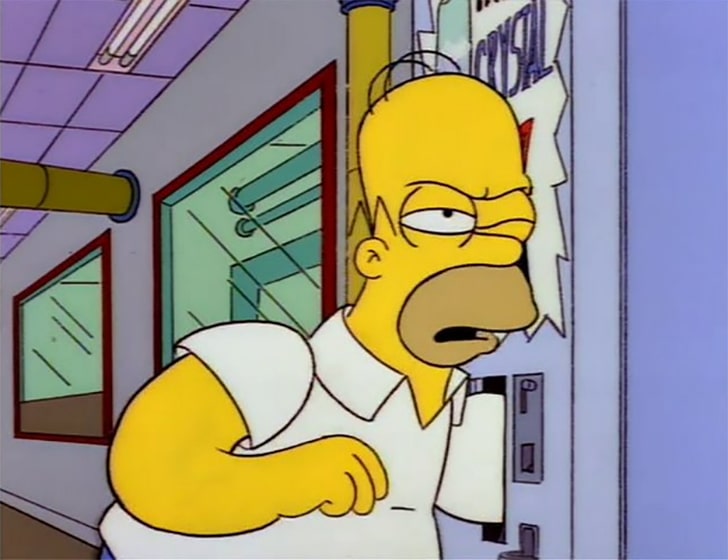
In 2003, a real-life event mirrored Homer’s fictional plight in a more dramatic and harrowing fashion, reflecting Aron Ralston’s life-threatening ordeal. Ralston found himself trapped by a boulder in a remote canyon, with his arm pinned and no help in sight. After 127 hours, he made the agonizing decision to amputate his arm to escape.
Picture-Perfect Pastries
Predicted: 2005
Came true: 2006
The show once again took a creative leap into the future, featuring a scene where Marge took a Polaroid picture of Bart and Lisa dressed for prom. The photograph transforms into a cake in a delightful twist typical of the show’s futuristic visions.
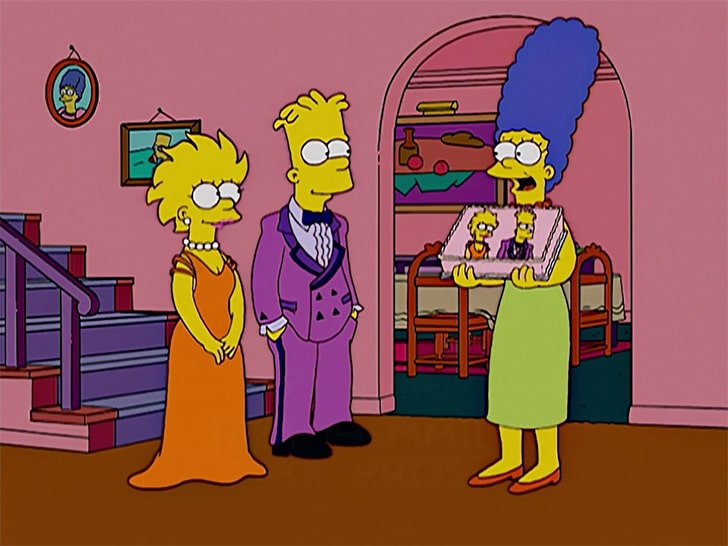
What once seemed like a fanciful concept in “The Simpsons” is not so far-fetched anymore. 3D food printing technology has turned the idea of edible images into a reality. While we may not yet be at the point where photographs instantly turn into cakes, 3D printers can create intricate edible designs, including detailed pictures, using various food substances.
Left-Handed Dreams
Predicted: 1991
Came true: 2008
Ned Flanders, the ever-optimistic neighbor of the Simpson family, once embarked on an entrepreneurial venture by opening “The Leftorium,” a store dedicated exclusively to left-handed people. At the time of the episode, this concept was portrayed as a quirky, somewhat far-fetched idea, aligning with Ned’s ‘ character as well-meaning but often out of step with mainstream business sense.
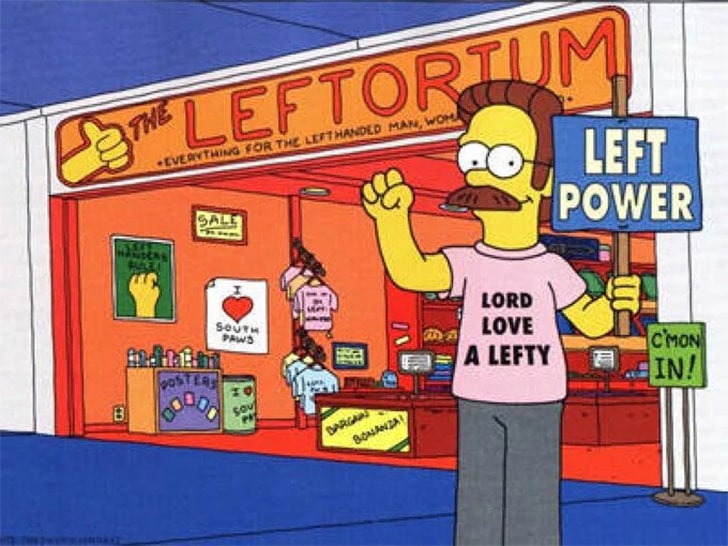
Despite his enthusiasm, he faces financial struggles with his niche store. However, a real store named “Lefty’s” opened in 2009, specifically catering to the needs of left-handed individuals. Unlike its fictional counterpart, this store found success and expanded, with locations across the United States.
Olympian Scurrying Squirrel
Predicted: 1997
Came true: 2018
During the “Mountain of Madness” episode, Mr. Burns and Homer Simpson find themselves in a mountain cabin that gets buried in an avalanche. As they desperately try to escape, their cabin rockets down the mountain, and amid this chaotic descent, they encounter a squirrel darting past.

At the Winter Olympics, viewers were amused and amazed by a real squirrel’s unexpected appearance during a skiing event. Much like its animated counterpart in “The Simpsons,” the squirrel narrowly avoided disaster as it scurried across the ski slope just as competitors were speeding down. This real-life squirrel’s daring dash captivated audiences and became a standout, lighthearted moment of the games.
Sweet Sweet Sugar Heist
Predicted: 1994
Came true: 2009
In a 1994 episode, “Lisa’s Rival,” Homer stumbles upon an unusual opportunity for profit. After witnessing a truck accident, he devised a plan to steal and sell hundreds of pounds of spilled sugar. True to Homer’s character, the scheme is fraught with missteps, including storing the stolen sugar in his backyard, which leads to a series of comical troubles. The pile of sugar attracts swarms of bees and, ultimately, dissolves in the rain.

This bizarre storyline from “The Simpsons,” seemingly too outlandish to occur in real life, found a surprising echo 15 years later. In India, two individuals were caught in a strikingly similar situation—apprehended for stealing a sugar truck.
Paws and Pics
Predicted: 2011
Came true: 2023
“The Simpsons” once again ventured into the future in an episode where the family gathered for Thanksgiving and posed for their annual Christmas card photo. This time, however, there’s a delightful twist: the family pets step in to help, snapping the picture themselves. This imaginative portrayal of animals taking on a typically human task adds a whimsical touch to the show’s exploration of the future.
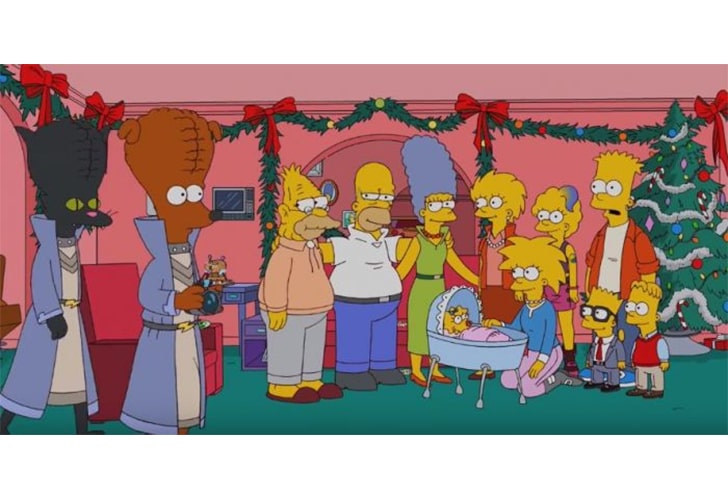
A real-life parallel emerged in 2023 with Preguntale, a dog from Argentina. Preguntale gained attention for his ability to take selfies around the farm, seemingly using a GoPro. This remarkable feat echoes the scenario in “The Simpsons,” where pets are shown using technology to capture a family moment.
KFC’s Flavor Twist
Predicted: 1995
Came true: 2009
In an episode that marks a significant character development, Lisa becomes a vegetarian after a heartfelt encounter with a baby lamb. Her journey is marked by various challenges and revelations about the meat industry, including a satirical moment where she comes across an advertisement for “meat-flavored chicken.” This humorous and ironic depiction pokes at the absurdities and contradictions often found in food marketing.

Imitating the show’s satire, KFC, in a real-life parallel, introduced grilled chicken buckets flavored with meat. This product launch, aimed at appearing “healthier,” mirrors the Simpsons’ gag about meat-flavored chicken. It reflects the food industry’s attempts to cater to changing consumer preferences while maintaining traditional flavors.
Prince William’s Tress Trends
Predicted: 1995
Came true: 2018
The show humorously reveals the cause behind Homer Simpson’s baldness: stress-induced hair loss from Marge’s pregnancies. Each announcement of a new addition to the family leads Homer to panic and pull out clumps of his hair. By the time their third child, Maggie, arrives, Homer is left completely bald.
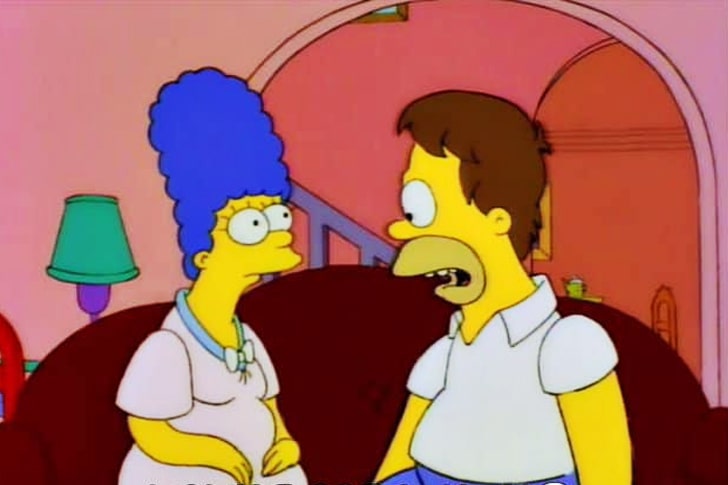
This storyline garnered attention from fans who noticed an amusing parallel with Prince William’s real-life hair progression. They pointed out that Prince William’s noticeable hair thinning correlated with Kate Middleton’s three pregnancies. While hair loss in men is a common phenomenon, the timing in Prince William’s case drew light-hearted comparisons to Homer’s animated hair loss journey.
Rock Riffs and Game Hits
Predicted: 2002
Came true: 2005
During “How I Spent My Strummer Vacation,” Homer attends a rock and roll fantasy camp where he rubs elbows with legendary musicians, including Mick Jagger and Keith Richards from The Rolling Stones. In a memorable moment, they gift Homer a jacket emblazoned with “Guitar Hero” on the back, a nod to his rock star aspirations in the episode.

This moment stands out because of its unforeseen connection to the real world. Three years after the episode aired, the video game “Guitar Hero” was released, quickly becoming a cultural phenomenon. Adding to the luck, The Rolling Stones were among the artists whose music was included in the game.
Wisth’s Wisconsin Woes
Predicted: 1992
Came true: 2012
Homer’s love for food takes center stage in “New Kid on the Block,” which involves an all-you-can-eat seafood restaurant, the Frying Dutchman. After seeing an advertisement, Homer visits the restaurant and indulges in an epic eating spree, only to be kicked out when the restaurant closes. Outraged by this, he considers suing the restaurant for false advertising.
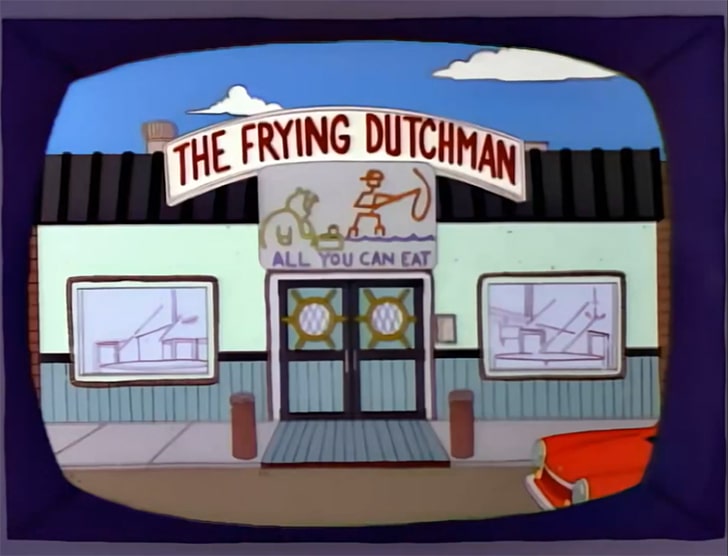
In 2012, Bill Wisth visited Chuck’s Place and took advantage of their all-you-can-eat fish fry. However, after several trips to the buffet, the restaurant claimed they had run out of fish. Feeling shortchanged by the experience, Bill refused to pay and even planned to walk out of the restaurant, alleging that they didn’t honor the all-you-can-eat offer.
World Cup Whispers
Predicted: 1997
Came true: 2018
In the 1997 episode “The Cartridge Family,” the family watches a TV commercial hyping an upcoming soccer match between Mexico and Portugal. While not mainly focused on predicting sports outcomes, this episode inadvertently created buzz during the 2018 FIFA World Cup years later. It had forecast a showdown between Mexico and Portugal in the World Cup.

However, the reality of the 2018 World Cup played out differently. Mexico, after showing promise in the tournament, was defeated by Sweden. This loss meant that any potential Mexico-Portugal matchup would only have been possible in the semi-finals, not in the finals, as some fans had hoped based on the “Simpsons” episode.
The Isotopes’ Name Game
Predicted: 2001
Came true: 2002
In “Hungry, Hungry Homer,” aired in 2001, Homer stages a hunger strike to prevent Springfield’s beloved minor league baseball team, the Isotopes, from relocating to Albuquerque. This plot, blending Homer’s characteristic antics with a heartfelt defense of local pride, seemed like another of the show’s humorous, fictional narratives.
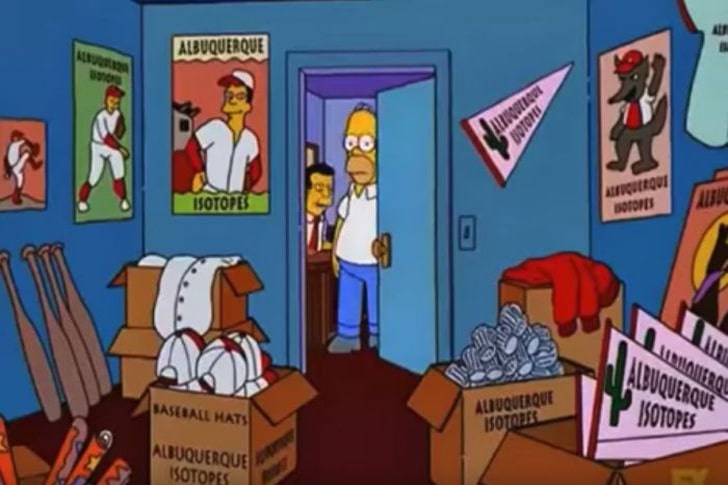
However, in 2002, just a year after the episode aired, the Calgary Cannons, a real minor league baseball team, announced their move to Albuquerque, New Mexico. The Albuquerque Tribune decided to run a poll for the naming of their new baseball team, leading to the Albuquerque baseball team being named the Isotopes.
Bart’s Encounter With Harambe
Predicted: 2006
Came true: 2016
In a 2006 episode of “The Simpsons,” a storyline unfolds where Bart and Lisa visit an animal sanctuary, and a chimpanzee pulls Bart through the cage bars. The interaction between Bart and the chimpanzee, including a shared ice cream and the chimpanzee ‘adopting’ Bart, is humorous and heartwarming, typical of the show’s approach to blending comedy with touching moments.
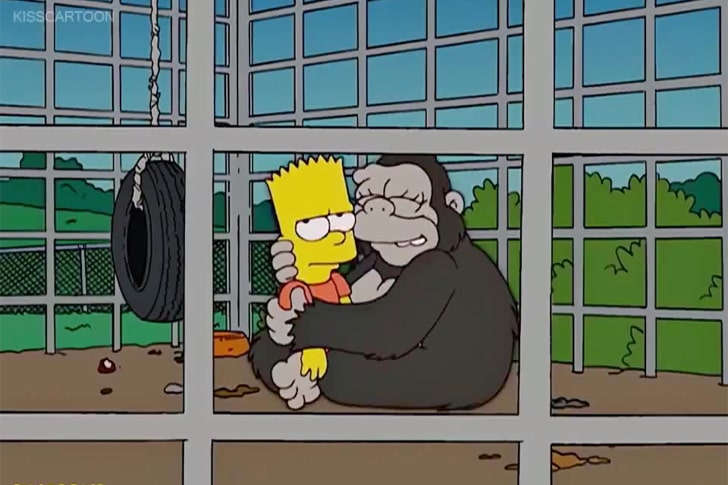
A decade after this episode, a young child entered Harambe’s enclosure at the Cincinnati Zoo. The situation became tense and widely publicized as zoo officials faced the difficult decision of how to rescue the child while ensuring his safety, leading to the tragic and controversial decision to euthanize Harambe.
Bootlegging and Breaking Bad
Predicted: 1997
Came true: 2008
In “Homer vs. The Eighteenth Amendment,” Homer finds himself entangled in illegal activities. Ever the voice of reason, Marge urges Homer to abandon his illicit endeavors, concerned about the moral and legal implications.
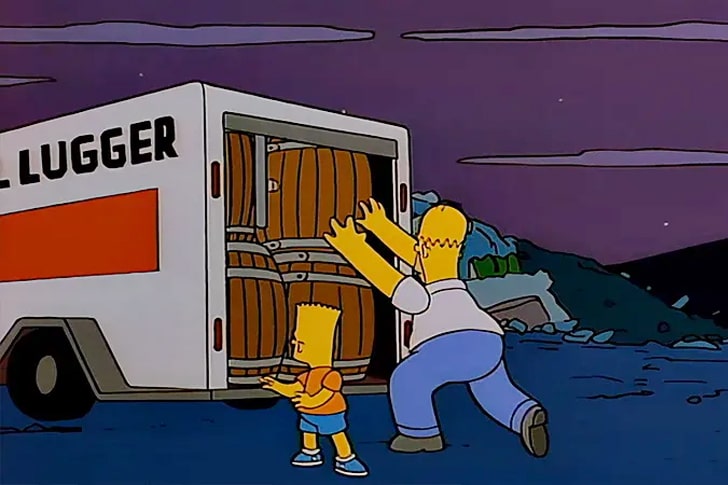
Fast forward to the “Breaking Bad” premiere in 2008, and viewers are introduced to a similar premise, albeit in a much darker and more dramatic context. Walter White, a high school chemistry teacher turned methamphetamine manufacturer, finds himself in a web of illegal activities. His wife, Skyler, plays a role akin to Marge’s as she grapples with her husband’s criminal life and ultimately tries to persuade him to leave it behind.
Osaka Flu to COVID-19
Predicted: 1993
Came true: 2020
In the realm of “The Simpsons” uncanny predictions, fans quickly drew parallels between a 1993 episode and the emergence of COVID-19. In the episode “Marge in Chains,” a worker in Osaka, Japan, coughs into a package destined for Homer Simpson. Weeks later, when Homer opens the package, he inhales a green cloud and falls ill with a rare disease.

While the episode doesn’t specifically predict COVID-19, the similarities in the storyline resonated with the circumstances of the COVID-19 pandemic. The “Osaka Flu,” referred to in the episode, leads to widespread illness in Springfield, paralleling the rapid spread of COVID-19 across the globe.
Blinky’s Real-Life Twin
Prediction: 1990
Came true: 2011
“Blinky,” the three-eyed fish, is one of the show’s most iconic and environmentally charged symbols. First appearing in a 1990 episode, Blinky was a mutation caused by nuclear runoff from Mr. Burns’ power plant, serving as a stark, satirical commentary on environmental pollution and its consequences.
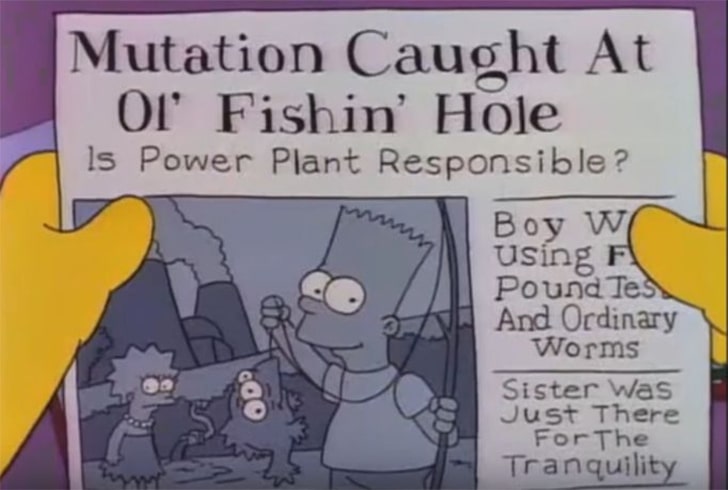
Two decades later, in a twist seemingly lifted from the world of “The Simpsons,” an Argentine fisherman made a startling discovery that echoed Blinky’s story. Near a nuclear plant, he caught a wolf fish that, to his surprise, had three eyes. This real-life occurrence of a three-eyed fish brought the fictional Blinky back into public discussion, highlighting the show’s lasting relevance.
Future Meets Today’s Tech
Predicted: 1992
Came true: 2023
In a vision of the future in 2032, “The Simpsons” once again showcased their imaginative foresight. An episode from 1992 features Homer and Bart walking to the cinema when a Star Trek-style hovercar zooms past them, a depiction of futuristic transportation that seemed wildly speculative at the time.
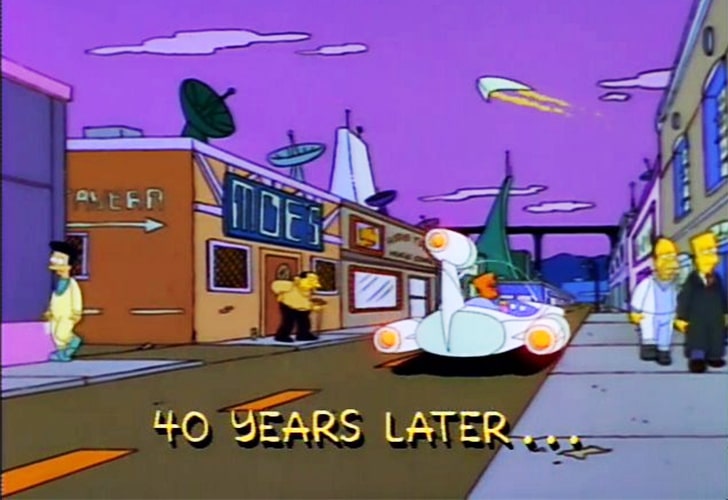
Fast forward to November 9, 2023, and it became a reality with Samson Sky’s Switchblade. This hybrid-electric vehicle is a remarkable innovation: it can transform from a road-legal car into a flying machine in just under three minutes. Its successful maiden flight and landing in Washington State marked a significant milestone in the evolution of personal transportation.
Magic Turned Tragic
Predicted: 1993
Came true: 2003
In an episode of “The Simpsons,” Mr. Burns’ foray into the casino business includes a performance by Gunter and Ernst, a pair of German magicians resembling the real-life duo Siegfried and Roy. The episode takes a dramatic turn when their tiger unexpectedly turns on them during a show, a plot point that seemed like another part of the show’s over-the-top humor.
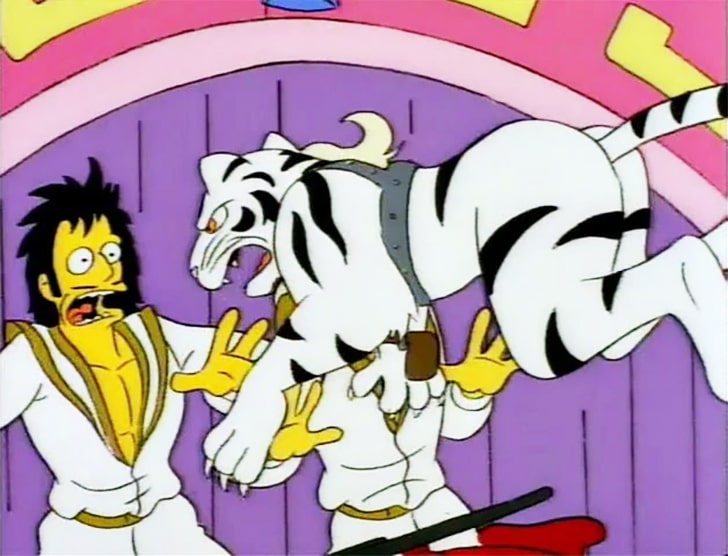
However, in a startling parallel, ten years after this episode aired, the famed Las Vegas performers Siegfried and Roy faced a similar, terrifying incident. During their long-running act involving white Bengal tigers, Roy was attacked on stage by one of their tigers, resulting in severe injuries.
Serpent Saga
Predicted: 1993
Came true: 2013
A 1993 episode, “Whacking Day,” featured Springfield celebrating a fictional holiday where residents are encouraged to whack snakes. This bizarre and controversial tradition in the show was a humorous critique of mob mentality and animal cruelty, seemingly too far-fetched to have any real-world counterpart.
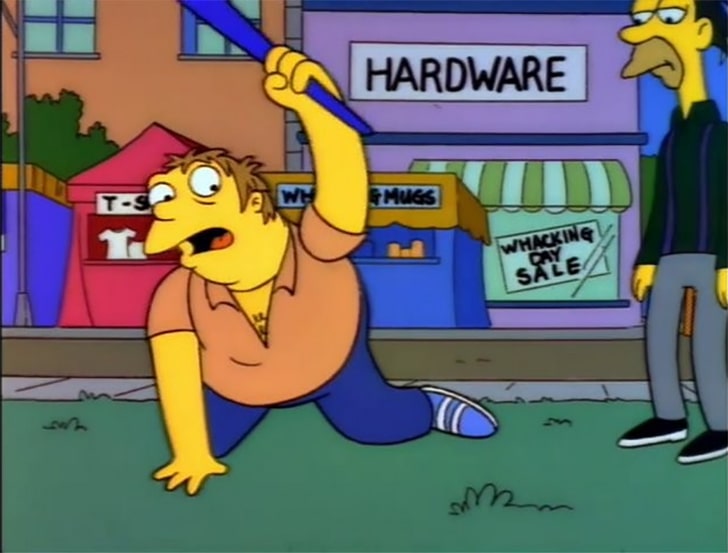
However, in a surprising turn of events that mirrored the show’s plot, Florida introduced the “Python Challenge” in 2013. This real-life event, organized by wildlife officials, encouraged residents to capture as many invasive Burmese pythons as possible. The challenge aimed to control the population of this non-native species, which posed a significant threat to the local ecosystem in the Florida Everglades.
Arnold Palmer’s Legacy
Predicted: 2016
Came true: 2016
The season 28 premiere of “The Simpsons” in 2016 featured a moment that, while not a prediction, coincided with a notable real-life event in an eerily timely manner. In the episode, Homer humorously mentions his plan to spray his friend with super soakers filled with “Arnold Palmers,” referring to the famous drink mix popularized by the legendary golfer Arnold Palmer.
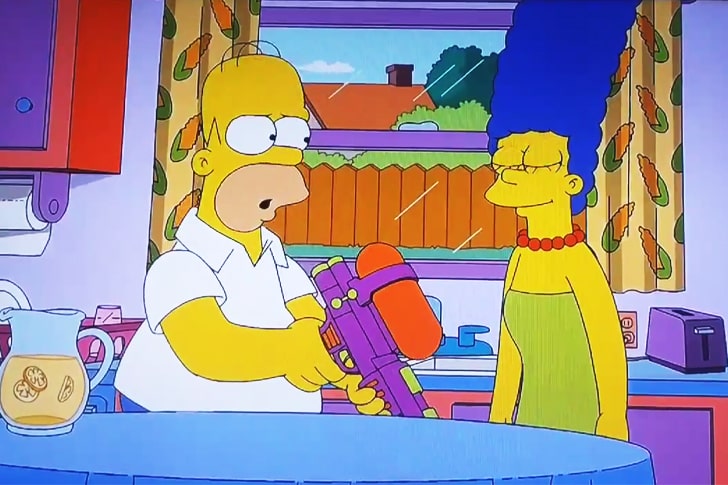
In a striking coincidence, news broke of Arnold Palmer’s passing on the very day the episode aired. The producers and fans of the show were taken aback by the coincidence, as the mention of Arnold in the episode transformed from a light-hearted nod into an unplanned, posthumous tribute to his legacy.
Art Imitates Life
Predicted: 1990
Came true: 2016
In the “The Simpsons” episode “Itchy & Scratchy & Marge,” the show humorously addresses themes of art, censorship, and public decency through the controversy surrounding a replica of Michelangelo’s famous statue, David, brought to Springfield. The episode, which aired in 1990, sees some residents of Springfield objecting to the statue’s nudity and demanding it be covered up.
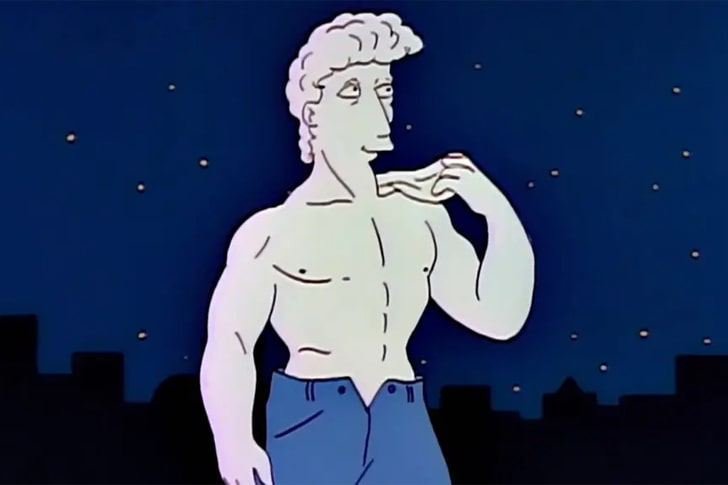
In an uncanny parallel, a similar scenario unfolded in real life in 2016. A replica of Michelangelo’s David was exhibited in Saint Petersburg, Russia. Just like in “The Simpsons,” these protesters called for the statue to be clothed, citing concerns over its nudity and the perceived need to uphold public decency.

You must be logged in to post a comment Login